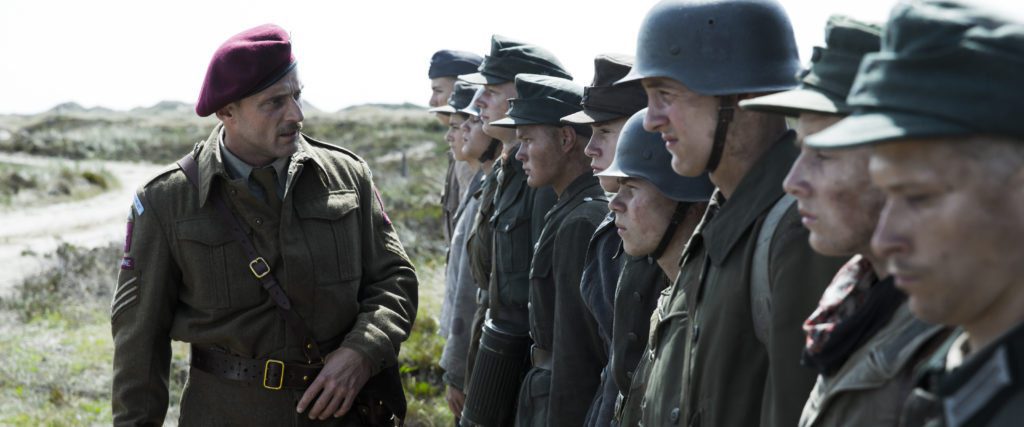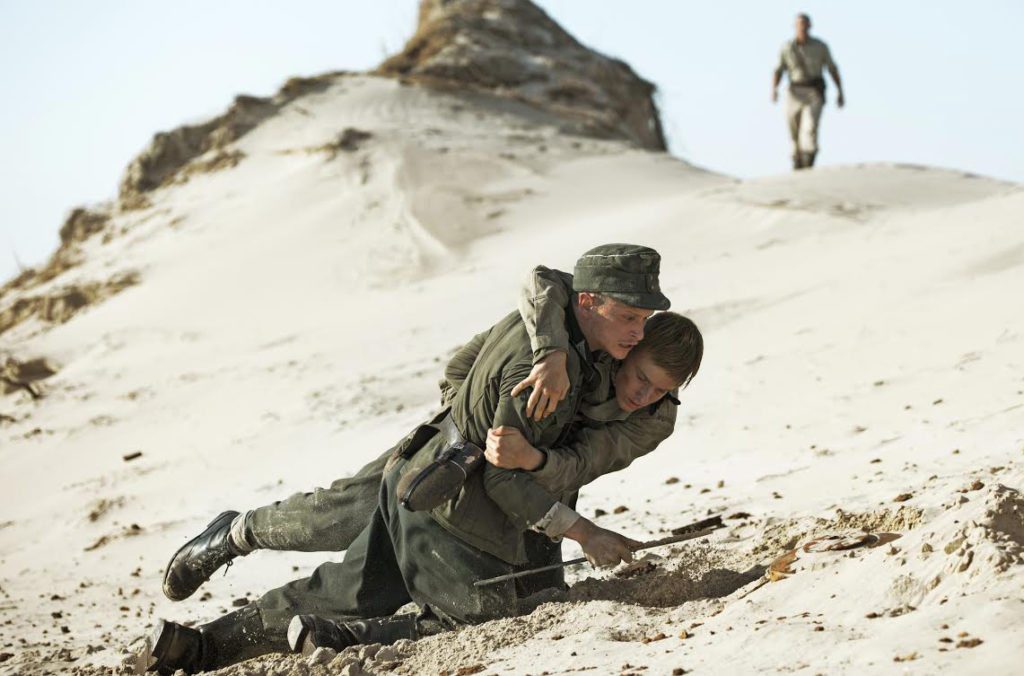?If you?re old enough to go to war, you?re old enough to clean up your mess.?
At the end of World War II, the Danish army used German POWs to clear their beaches of over two million landmines the Germans had put there during their occupation. Land of Mine (Denmark?s official Oscar entry) is inspired by that history. It is a story that Danes have not really paid attention to through the years, because it was actually a war crime by the Allied forces at the end of the war.
As the film opens we see Danish Sergeant Rasmussen in his jeep watching a long row of German prisoners marching by. When he sees one carrying a Danish flag as a souvenir, Rasmussen beats him mercilessly. Rasmussen goes on to oversee a dozen young POWs who are detailed to demine a particular section of beach, having been promised that after they clear the beach of the 70,000 mines there, they will be able to return home. The POWs have had minimal training in their task. No one in Denmark really seems to care if any survive. They are, after all, the remnant of an occupying army that has treated Denmark badly. They are kept locked up at night in a small building. They are given very little food.
Over time Rasmussen moves from utter contempt for his charges to seeing them as people who are in over their heads. He may even have a grudging respect for the humanity he begins to see in them in spite of the German uniforms they wear. He even finds that he shares some duplicity in an unjust and perhaps even dishonorable situation. For the Germans this is seen as a chance to finally get home. Some of them share dreams of what they will do on their return. Others doubt that there will be much left of their society. Still others understand that they may not live through this.
The film sets up a contrast between the beautiful Danish beach and the deadly mission that is underway. The scenery seems so inviting and peaceful, yet we know it is a place of danger and death. That peaceful/violent dichotomy reflects the emotions at play in the film as well.
I saw this film not long after I had screened Behind Bayonets and Barbed Wire, a documentary about the mistreatment of American and British POWs by the Japanese during the war. That film pointed out that the Geneva Convention forbids using POWs for dangerous jobs. What we see being done to the Germans is definitely outside international law. It is for this reason that much of this subject has been kept out of most public discussions.
Of interest is the attitude that is expressed towards the Germans. It is understandable that the Danes would have anger toward them. Rasmussen?s attack on a prisoner in that opening scene exemplifies the hatred that the Danish people had toward the occupying Germans. There are scenes that show hateful abuse towards the German soldiers. Such, we might conclude, is part of war. We dehumanize our enemies and then feel free to do unspeakable things to them. But Jesus taught ?You have heard that it was said, ?You shall love your neighbor and hate your enemy.? But I say to you, Love your enemies and pray for those who persecute you, so that you may be children of your Father in heaven.? (Matt. 5:43-45) We may well know and affirm those verses, but it is a very difficult teaching to actually live out?especially when there has been great animosity over a period of time. By showing the depth of hatred that can be eventually overcome (at least partially) the film offers a hope that we are capable of living out Jesus? teaching.
This film won the World Cinema Audience Award at AFI Fest.
Photos courtesy of Sony Pictures Classics
FilmReviews





